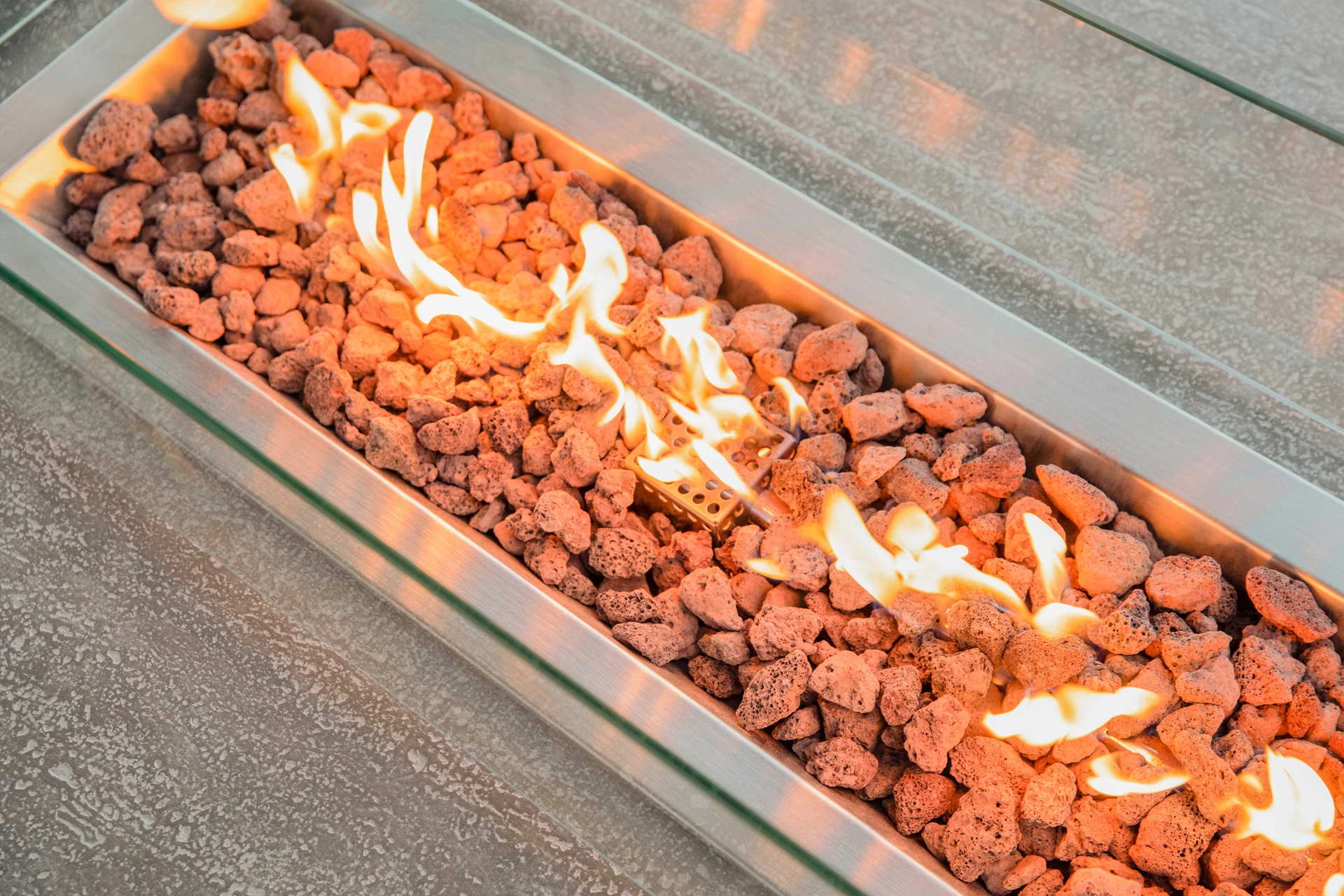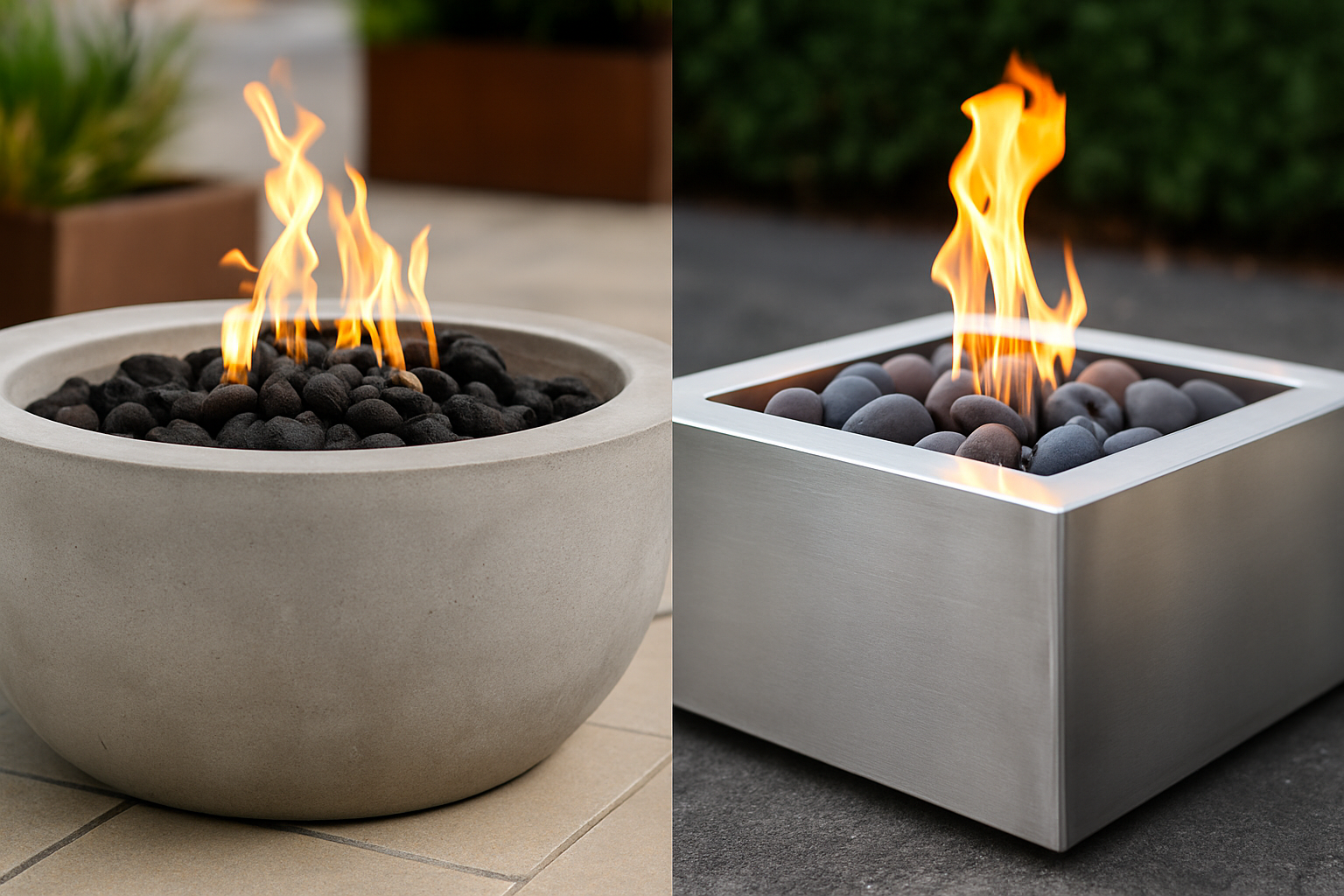1 Why the choice of material is crucial
In addition to the type of fuel (gas or wood), the material determines the appearance, weight,
heat output, maintenance and suitability for different locations. In the premium segment,
Beton (water- and weather-resistant mixtures, partly as reinforced variants)
and stainless steel are the most common materials.
2 Application scenarios at a glance
| Material |
Typical use |
Characteristic |
| Beton fire pit |
Garden, terrace, poolside, permanently installed courtyards |
Heavy, very stable presence – looks natural and blends harmoniously with stone/greenery |
| Stainless steel fire pit |
Gastronomy, event areas, balconies, roof terraces |
Lightweight and mobile – ideal if installation locations change frequently or are used seasonally |
3 Durability & service life
- Beton: With dense mix/reinforcement usually 8-15 years+. No rust, no corrosion.
In severe weather conditions (freeze/thaw cycles), fine surface hairline cracks can occur – visually, not structurally critical.
Weather protection cover in winter significantly extends the service life.
- Stainless steel: High-quality grades (e.g. V2A/V4A) achieve 10 years+. V4A is recommended for salt/coastal locations. No cracking, hardly any structural ageing; slight color change/darkening due to weathering is normal
and polishable.

4 Color, appearance & possible changes
- Beton: Common shades are light gray, cement gray, anthracite, sand, stone looks (e.g. travertine).
No “varnish”, therefore no classic flaking. UV/rain exposure can create a slight patina over the years,
often desired. Sealants keep the color effect stable for several years.
- Stainless steel: Natural metal (brushed) or powder-coated surfaces (e.g. matt black).
Metal jaws discolor minimally when exposed to heat (“temper colors”) – technically uncritical.
Coated versions should be heat- and weather-resistant (powder-coated) to minimize chalking/fading.
5 Temperature change, winter & climate suitability
- Beton: High temperature tolerance; for large freeze/thaw margins (Alpine region, low mountain ranges)
a reinforced formulation/inner frame is recommended. Cover in winter and avoid standing water, to reduce the effect of frost on the surface. Heats up slowly, but releases heat into the environment for a long time.
- Stainless steel: Excellent thermal shock resistance, no frost problems.
However, metal gets very hot and cools down faster than Beton. In extreme cold, do not shock
to maximum flame (to protect the material).
6 Hardness, strength & mechanical aspects
- Beton: Very pressure-resistant, heavy and stable. Edges can be damaged by hard impact;
substrate should be level and load-bearing.
- Stainless steel: Tough and impact-resistant, but lighter. In the case of thin-walled constructions, be aware of vibrations;
weld seams depend on quality and design.
7 Care & maintenance
| Aspect |
concrete |
Stainless steel |
| Cleaning |
With a soft cloth/water, mild cleaning agents; no aggressive chemicals |
With mild cleaner/microfiber cloth; wipe off fingerprints regularly |
| Protection |
Annual sealing recommended; weather protection cover in bad weather/winter phases |
Weather protection cover recommended; occasional care/polishing near the coast |
| Expenditure |
Medium (★★☆) |
Low (★☆☆) |
8 Summary & Recommendation
- Beton is the right choice when the focus is on a natural, warm appearance, a stable presence and a
fixed installation. Ideal for year-round garden design and design integration.
- Stainless steel impresses when it comes to mobility, a modern look and low maintenance –
perfect for flexible patios, events or commercial use.
- Cold regions/winter: Use a cover. For Beton, choose robust mixtures/reinforcements;
for stainless steel, use high-quality alloys (e.g. V4A near the coast).
- Best of both worlds: the combination of concrete housing and
stainless steel firing system often proves its worth – appearance, safety and performance in one.











